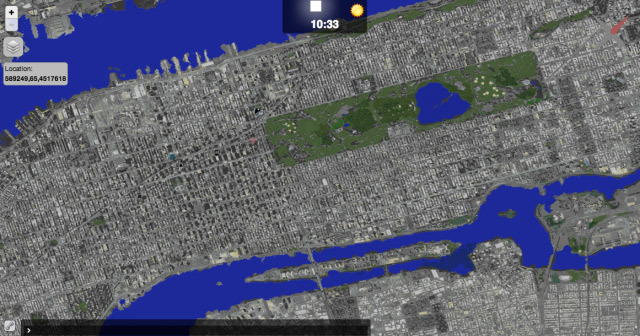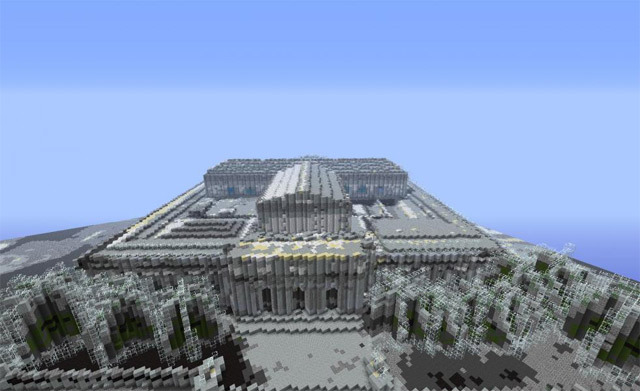In Minecraft build Manhattan scale 1: 1

Christopher Mitchell, a doctoral student at New York University, is working hard every day on a research project, collecting an exact model of the Manhattan area from Minecraft blocks, down to copies of individual buildings. The area of the island is 58.8 km 2 , the building is very dense, so there is a lot of work. For the year, Christopher laid 71 billion blocks, and for the model had to use part of the university cluster with 300 processor cores and 200 GB of RAM.
In many modern games the action takes place on the map of New York, among them Crysis 2, Crysis 3, Spider Man 2, Grand Theft Auto IV and Godfather II. Each has a map, but they all suffer from shortcomings: incomplete coverage and insufficient detailing, excessive styling and compression, writes Ars Technica.
Using significant computing power of the university data center and various algorithms, Mitchell intends to make a full-scale, scalable map, which can later be used by other game developers. Minecraft players will also be able to play on a real city map.
')
The scientist takes information from various sources, including Google Earth. He had to reverse engineer the Google Earth protocol in order to extract the house models, and Mitchell worried that he could violate the license to use the service.

Modeling Manhattan on a 1: 1 scale is part of an even larger project (!) Called Sparseworld. It combines the geodetic data of the USGS EROS service, three-dimensional building models from Google 3D Warehouse to create models. In principle, Sparseworld's virtual space can be expanded beyond Manhattan, there would be computing power.

Sparseworld is based on the TopoMC project, whose engine creates a digital model of the real world at a scale of 1: 6, and Mitchell rewrote TopoMC to simulate 1: 1. In the future, he plans to switch from Python to another platform and create an algorithm for importing tree information from the USGS EROS to automatically place them on the map.
Source: https://habr.com/ru/post/215015/
All Articles